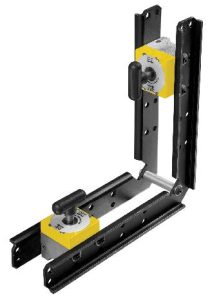
If you struggle to prevent workpieces from moving or shifting when welding, you may want to invest in a set of welding magnets. Welding is a hands-on process. You’ll have to hold the welding torch so that the arc fuses together the surfaces to which it’s exposed. Welding magnets can make your job a little easier by securing the workpieces.
Overview Welding Magnets
Welding magnets are magnetic workholding solutions that are designed for welding. They will secure ferromagnetic workpieces in place so that you can safely weld them.
You don’t have to worry about workpieces moving while you are holding a welding torch. When placed against one or more welding magnets, the workpieces will remain stationary. Some welding magnets contain neodymium, whereas others contain samarium-cobalt. Regardless, they all contain an ultra-strong magnet.
How to Use Welding Magnets
You can use welding magnets for many different welding-related applications. If you’re welding sheet metal, for instance, you may want to use welding magnets to hold it upright. You can’t expect to weld sheet metal if it’s placed flat. With welding magnets, you can secure the sheet metal upright so that it’s easier to weld.
What to Look for in Welding Magnets
When shopping for welding magnets, check the supported angles. Different types of welding magnets support different workholding angles. In other words, they can hold workpieces at different angles. Many welding magnets support a 90-degree angle, but they’ll often support other angles. If you’re going to buy welding magnets, you should check the supported angles.
Keep in mind that some welding magnets have an adjustable base. You can adjust them to achieve a custom angle. Adjustable welding magnets such as this essentially support all angles.
You should also consider the holding strength. The holding strength or holding value refers to how much weight a welding magnet can support. Ferromagnetic workpieces can be heavy. Even a piece of sheet metal can be heavy. To ensure that the workpiece doesn’t move or shift while you are welding it, you must use welding magnets that can support its weight. The holding strength or holding value represents the maximum amount of weight that a welding magnet can support.
Some welding magnets are reversible. They can hold workpieces from the inside or outside. Reversible welding magnets are convenient. And because they can hold workpieces from both the inside and outside, they offer greater utility than other, single-direction welding magnets.
